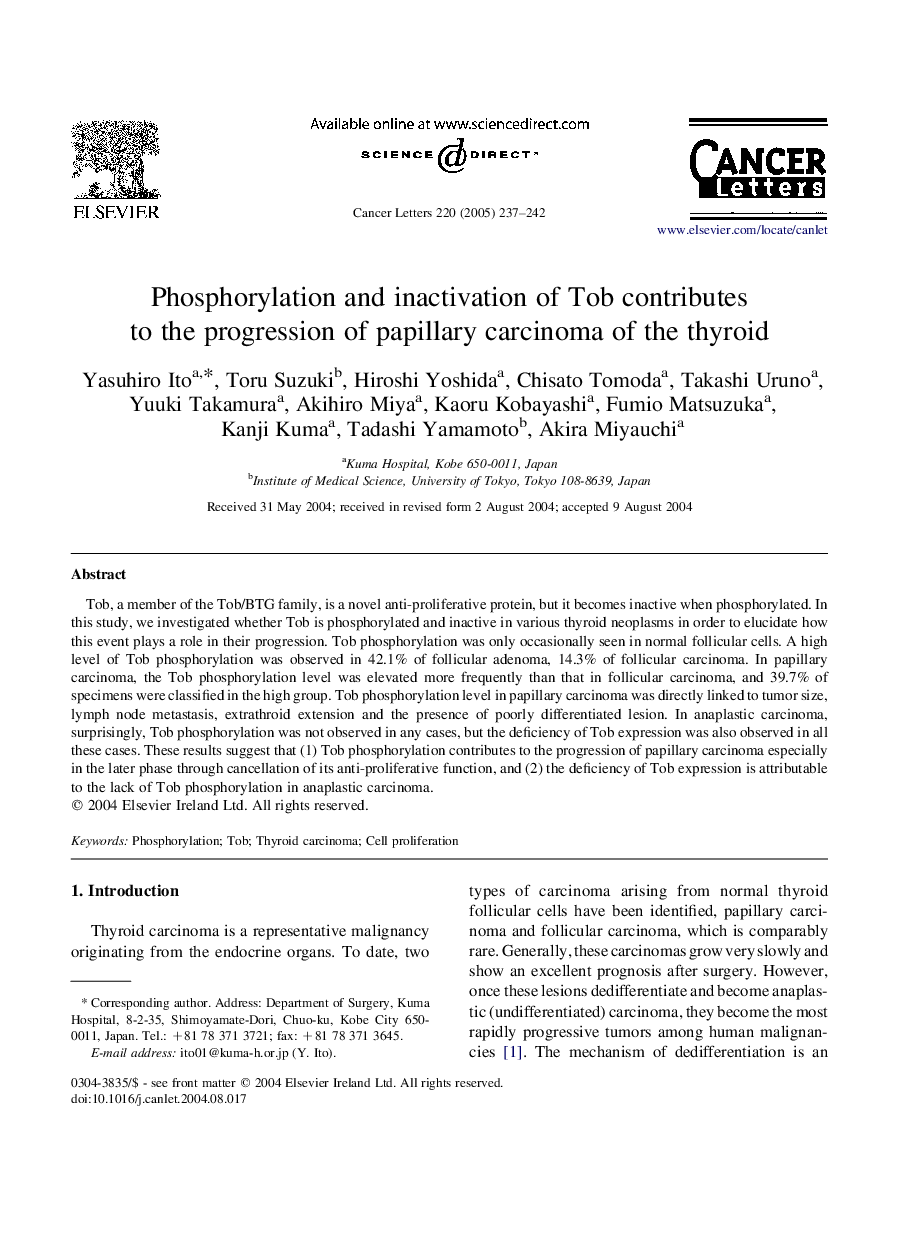| Article ID | Journal | Published Year | Pages | File Type |
|---|---|---|---|---|
| 9905271 | Cancer Letters | 2005 | 6 Pages |
Abstract
Tob, a member of the Tob/BTG family, is a novel anti-proliferative protein, but it becomes inactive when phosphorylated. In this study, we investigated whether Tob is phosphorylated and inactive in various thyroid neoplasms in order to elucidate how this event plays a role in their progression. Tob phosphorylation was only occasionally seen in normal follicular cells. A high level of Tob phosphorylation was observed in 42.1% of follicular adenoma, 14.3% of follicular carcinoma. In papillary carcinoma, the Tob phosphorylation level was elevated more frequently than that in follicular carcinoma, and 39.7% of specimens were classified in the high group. Tob phosphorylation level in papillary carcinoma was directly linked to tumor size, lymph node metastasis, extrathroid extension and the presence of poorly differentiated lesion. In anaplastic carcinoma, surprisingly, Tob phosphorylation was not observed in any cases, but the deficiency of Tob expression was also observed in all these cases. These results suggest that (1) Tob phosphorylation contributes to the progression of papillary carcinoma especially in the later phase through cancellation of its anti-proliferative function, and (2) the deficiency of Tob expression is attributable to the lack of Tob phosphorylation in anaplastic carcinoma.
Related Topics
Life Sciences
Biochemistry, Genetics and Molecular Biology
Cancer Research
Authors
Yasuhiro Ito, Toru Suzuki, Hiroshi Yoshida, Chisato Tomoda, Takashi Uruno, Yuuki Takamura, Akihiro Miya, Kaoru Kobayashi, Fumio Matsuzuka, Kanji Kuma, Tadashi Yamamoto, Akira Miyauchi,
